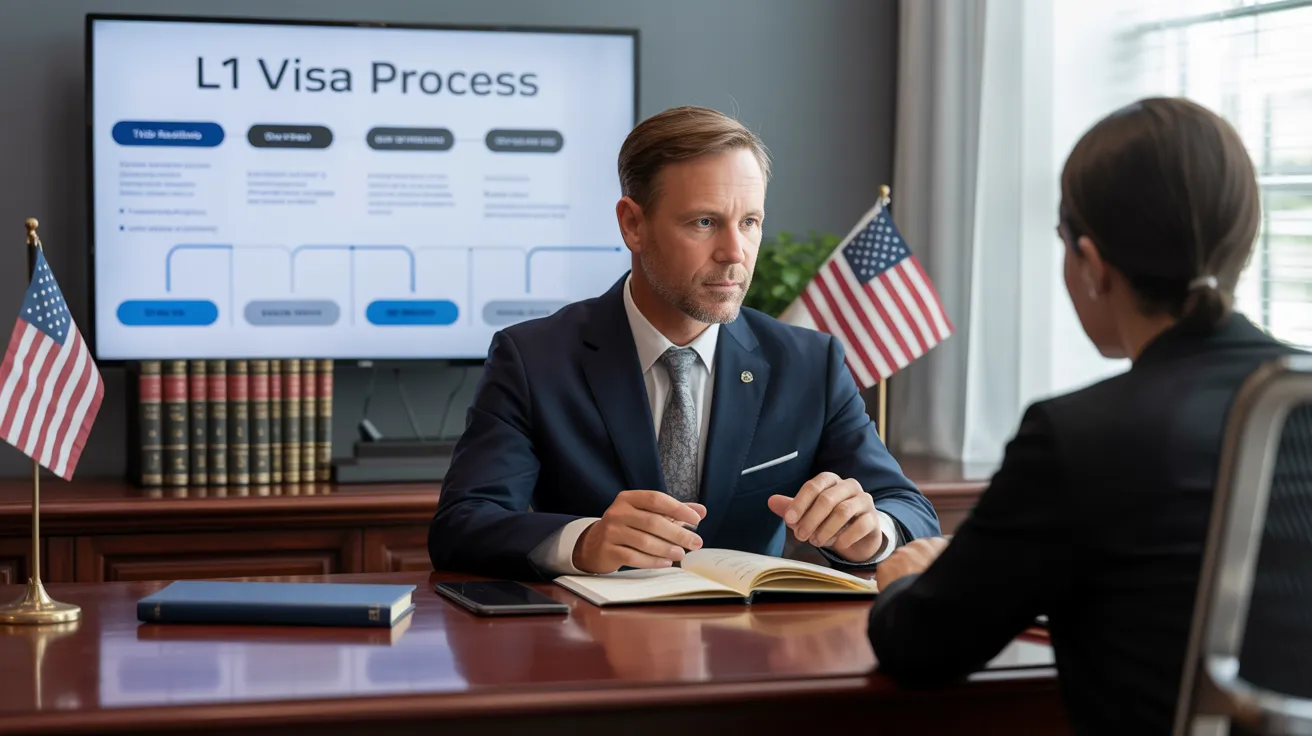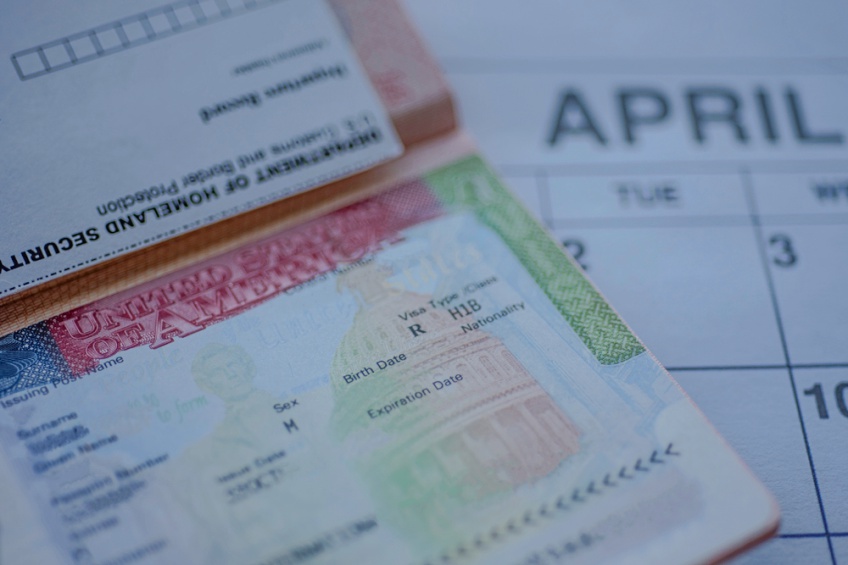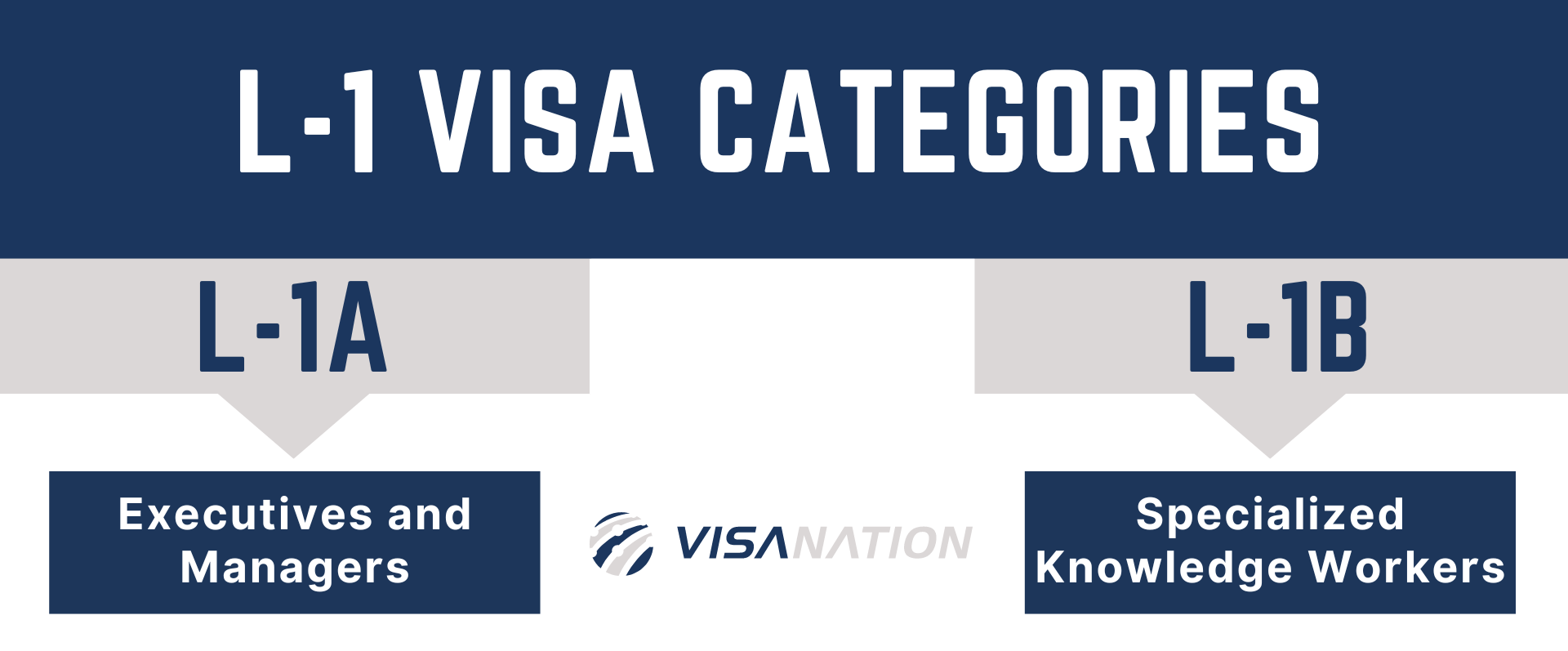Opening Opportunities: A Comprehensive Overview to the L1 Visa Process
The L1 visa process provides an important path for international firms seeking to move crucial staff members throughout borders. Comprehending the nuances of eligibility requirements, the distinctions between L-1A and L-1B visas, and the details of the application process can substantially affect an applicant's success. Nonetheless, maneuvering this complicated landscape is not without its challenges, and careful attention to paperwork and company sponsorship is crucial. As we check out the key parts of this procedure, the strategies for getting rid of prospective obstacles will certainly come to be apparent, revealing how notified prep work can open a world of chances.
Comprehending the L1 Visa
Comprehending the L1 visa involves recognizing its value as an essential device for multinational business looking for to transfer experienced workers between worldwide offices. This non-immigrant visa group promotes the activity of executives, supervisors, and specialized understanding workers to the USA, thus allowing organizations to preserve operational continuity and harness global ability successfully. The L1 visa is separated into two primary categories: L-1A for managers and executives, and L-1B for workers having specialized knowledge.The L1 visa offers a crucial duty in boosting a firm's competitive side in the global market - L1 Visa. By allowing companies to move their crucial employees, businesses can guarantee that vital projects are taken care of by certified individuals that are currently accustomed to the firm's society and functional procedures. This internal transfer device not just fosters knowledge sharing yet also advertises advancement and partnership throughout borders.Moreover, the L1 visa is often favored for its fairly uncomplicated application procedure compared to other visa categories, as it permits double intent, allowing owners to go after long-term residency while on a momentary copyright. This function makes the L1 visa particularly appealing for both employers and staff members, as it streamlines the path for competent professionals to establish long-term residency in the United States
Qualification Requirements
Qualification for the L1 visa pivots on several key standards that assure both the employee and the company satisfy specific qualifications. This non-immigrant visa is developed for international companies to move staff members from international workplaces to united state counterparts.Firstly, the employer should be a qualifying organization, which includes a parent firm, branch, affiliate, or subsidiary of an U.S. organization. The business must have been doing organization for at the very least one year both in the U.S. and abroad. This assures that the company has enough functional stability and a reputable presence.Secondly, the staff member needs to hold a managerial, executive, or specialized understanding setting. For L1A visas, the candidate must show managerial or executive qualifications, while L1B visas focus on specialized understanding associated to the company's products, solutions, or procedures. In addition, the worker should have helped the foreign entity for at the very least one continuous year within the last three years prior to their application.Lastly, the staff member's role in the united state have to straighten with their previous position, making sure that their skills and experience are leveraged for the business's advantage.
Kinds Of L1 Visas
The L1 visa category comprises two primary kinds created to assist in the transfer of employees within international business: the L1A visa for supervisors and executives, and the L1B visa for employees with specialized expertise. Each type offers distinctive purposes and has specific eligibility criteria.The L1A visa is customized for people that hold managerial or executive settings within a business. This visa makes it possible for high-level staff members to transfer to an U.S. branch, subsidiary, or associate of the same company. Applicants for the L1A visa have to demonstrate that they have been used in a managerial or executive capacity for at least one continuous year within the previous 3 years prior to their application. Additionally, this visa offers a much longer period of stay, initially approved for 3 years, with the opportunity of expansions for approximately 7 years.In comparison, the L1B visa is meant for experts with specialized expertise pertaining to the firm's products, services, or procedures. To qualify, applicants have to prove that their expertise is crucial to the organization and that they have actually benefited at the very least one continuous year within the last 3 years in a duty that required this specialized knowledge. The L1B visa is originally provided for 3 years, with expansions readily available for up to five years.Both visa kinds are important for companies looking for to boost their global operations by leveraging knowledgeable employees, thereby promoting development and performance within the U.S. market.
Application Process
Steering via the L1 copyright procedure involves several vital actions that need to be thoroughly followed to ensure a successful end result. The procedure starts with the U.S. employer, who should first develop qualification by demonstrating a certifying partnership with the foreign entity and validating that the staff member meets the certain requirements for the L1 visa classification being sought.Once qualification is confirmed, the company initiates the process by submitting Kind I-129, the Petition for a Nonimmigrant Employee, with the U.S. Citizenship and Immigration Provider (USCIS) This kind has to be come with by an in-depth description of the job tasks to be carried out, the business structure of both the U.S. and foreign entities, and the staff member's qualifications. It's essential to verify that all info is accurate and total, as noninclusions or mistakes can lead to hold-ups or denials.Upon authorization of the I-129 petition, the following action entails the worker getting the L1 visa at a united state embassy or consular office in their home nation. This stage calls for the conclusion of Type DS-160, the Online Nonimmigrant copyright, and scheduling an interview. During the interview, the candidate should offer evidence sustaining their certifications and the employer's petition.After the visa is granted, the staff member can enter the USA to operate in the designated role. In general, mindful preparation and adherence to every step of the application process are important for an effective L1 visa end result.
Needed Documents

Vital Forms Required
Maneuvering the L1 Visa procedure calls for cautious interest to the crucial types and documents needed for a successful application. The key type required is the Form I-129, Application for a Nonimmigrant Employee, which have to be completed and sent by the united state company. This type outlines the details of the work offer and the credentials of the worker seeking the L1 Visa.Alongside Type I-129, the candidate will need to total Kind I-539 if accompanying relative are additionally requesting visas. In addition, the company must supply proof of the certifying relationship in between the U.S. entity and the foreign entity, often requiring the submission of company papers such as articles of consolidation or monetary statements.Moreover, it is vital to consist of the L Category Supplement to Kind I-129, which defines the kind of L Visa being asked for-- either L-1A for managers and execs or L-1B for workers with specialized expertise. Finally, candidates must guarantee that all forms are signed and dated suitably, as insufficient submissions can result in delays or denials. Correctly putting together these vital types lays the foundation for a smoother L1 copyright process.

Supporting Proof Demands
Supporting documentation is crucial for an effective L1 copyright, as it validates the cases made in the request. Applicants have to give an array of records to show eligibility for the visa, which is classified right into two primary kinds: evidence of the certifying connection between the U.S. and international entities and proof of the applicant's qualifications.To develop the partnership, applicants should submit documents such as company organizational graphes, economic declarations, and evidence of possession. These records verify that the international business has a certifying partnership with the U.S. company, whether as a parent company, subsidiary, branch, or affiliate.For the applicant's qualifications, important records include a detailed employment letter from the international employer, detailing the applicant's task title, responsibilities, and duration of employment. Additionally, educational credentials, such as levels and diplomas, must be offered to prove the applicant's know-how in the relevant area.
Employer Sponsorship Documents

Common Difficulties
Steering the L1 visa process presents numerous typical obstacles that applicants need to understand. Trick issues usually include stringent documentation needs, possible hold-ups in handling times, and the requirement for stringent lawful compliance. Recognizing these barriers can help candidates better prepare and alleviate threats during their copyright trip.
Documentation Needs
The L1 copyright procedure often presents considerable obstacles connected to paperwork demands. Candidates should supply extensive documents to establish eligibility, which can cause confusion and potential hold-ups. Trick documents include proof of a qualifying connection between the united state and foreign company, evidence of the applicant's employment history, and detailed info regarding the work duty in the U.S.One usual challenge is gathering enough evidence to demonstrate the nature of the certifying relationship. Companies often have a hard time to existing clear organizational graphes or economic declarations that highlight the link in between the entities. Additionally, guaranteeing that letters of support from companies properly mirror the candidate's job tasks and credentials is essential, as vague summaries can result in denials.Another issue arises from the requirement for comprehensive job descriptions that align with the L1 visa groups. Applicants need to express not only their present function however also their supervisory or specific understanding obligations clearly. This demands an extensive understanding of both the candidate's setting and the regulatory language utilized in L1 applications.
Processing Dead Time
Experiencing hold-ups in processing times is a common challenge encountered by L1 visa candidates, typically resulting in disappointment and uncertainty. Numerous elements add to these hold-ups, including high application volumes, boosted scrutiny of applications, and management stockpiles within the U.S. Citizenship and Immigration Provider (USCIS) Applicants might locate that handling times can vary significantly relying on the service facility handling their application, as each center has its very own work and effectiveness degrees. Furthermore, the complexity of the applicant's situation, such as the demand for extensive paperwork or clarification, can even more prolong wait times.In some circumstances, issues connected to the applicant's present migration standing or previous visa background may likewise lead to additional hold-ups, as USCIS might require additional review or details. It is crucial for candidates to continue to be positive during this duration, preserving open communication with their employers and legal representatives to resolve any type of potential issues promptly.Understanding these handling time obstacles can help L1 visa candidates plan for feasible hold-ups and minimize the influence on their shift and occupation strategies. Perseverance and diligence are important virtues in navigating this elaborate process.
Lawful Conformity Issues
Several L1 visa applicants encounter lawful compliance problems that can complicate their trip towards obtaining the visa. Comprehending and adhering to the details policies established by the united state Citizenship and Migration Solutions (USCIS) is important. Usual difficulties include showing the certifying partnership in between the international and U.S. companies, along with proving that the applicant possesses the requisite customized understanding or supervisory capacity.Additionally, applicants should give comprehensive documents detailing their job responsibilities, corporate structure, and monetary feasibility of the U.S. entity. Inadequate or incorrect documents can lead to hold-ups or perhaps denials. Employers must also guarantee that they abide with labor legislations, including wage and functioning problem criteria, which can influence visa eligibility.Another typical problem entails keeping compliance with the regards to the visa once provided. Adjustments in work standing, job duties, or company framework can require changes to the visa, which if not attended to immediately can lead to lawful problems. Therefore, staying notified regarding conformity needs and looking for legal guidance when needed is vital to browse the complexities of the L1 visa process successfully.
Tips for Success
Success in the L1 copyright process typically pivots on precise preparation and focus to information. To boost your opportunities of approval, begin by extensively understanding the eligibility needs for both the L1A and L1B visa categories. Evaluate whether your setting at the firm qualifies as supervisory, exec, or specialized expertise, as this categorization notably affects your application.Next, collect substantial documents that validates your insurance claims. This consists of organizational charts, in-depth work summaries, and evidence of the firm's functional structure. Clear and succinct evidence of the qualifying connection in between the U.S. entity and the international entity is essential. Validate that all files are arranged logically and offered in a specialist manner, as this shows your dedication and seriousness L1 Visa guide about the application.Engage the services of a knowledgeable migration lawyer that specializes in L1 visas. Their proficiency can verify invaluable, assisting you with facility policies and ensuring that all documents adheres to current legislations. In addition, plan for the meeting by exercising response to usual concerns and preparing to discuss your duty and contributions to the business comprehensive.
Often Asked Inquiries
Can Household Members Accompany the L1 Visa Holder?
Yes, member of the family of L1 visa owners, including partners and single youngsters under 21, can accompany the main visa owner. They might likewise request L2 visas, which permit them to live in the United States.
For How Long Can I Remain on an L1 Visa?
The L1 visa allows initial stays of up to three years, with the possibility of extension. L1A visa owners may remain for an optimum of seven years, while L1B visa owners can stay for five years.
Can L1 Visa Owners Make An Application For an Eco-friendly Card?
Yes, L1 visa owners can make an application for an eco-friendly card. L1 Visa Requirements. They may pursue permanent residency through employment-based groups, typically requiring sponsorship from their employer, provided they meet the necessary certifications and documents needs
What Takes place if My L1 copyright Is Denied?
If your L1 copyright is refuted, you might get a notification outlining the reasons for rejection. You can look for to appeal the decision, reapply, or explore different visa choices based on your conditions.
Exist Any Type Of Travel Constraints With an L1 Visa?
An L1 visa normally enables for worldwide travel; however, re-entry to the U. L1 Visa Requirements.S. is contingent upon preserving legitimate standing. Tourists must assure compliance with visa problems to avoid difficulties upon return
Conclusion
